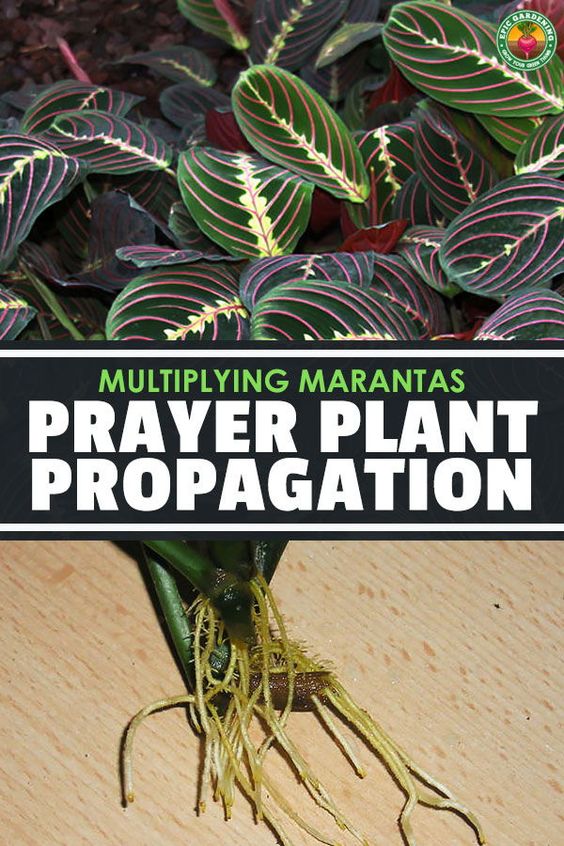We’ve done an in-depth piece on prayer plant in the past, sharing all kinds of growing tips. But we’ve heard that people still have questions on prayer plant propagation. So today, we’re going to go over some propagation techniques and demystify the process for you!
Handy Products For Maranta Propagation:
- Garden Safe Rooting Hormone
- Plastic Cutting Pots
- Fiskars Softouch Micro-Tip Pruning Snips
Propagation By Cuttings
By and large, propagating prayer plant from stem cuttings is the most popular. This is largely due to the fact that it’s the easiest method for increasing your plant supply. So let’s talk technique!
Begin by examining your plant, particularly the stem. Locate the points at which leaves will form from the stem. These are the leaf nodes, and are usually quite visible along the stem’s surface.

Select a healthy and vigorous cutting, and remove it just below one of these leaf nodes. Be sure to leave the entire node intact, as that’s where roots will develop. Use a pair of sterilized pruning snips to make a clean cut.
Dip about an inch of your cutting into water, then into a powdered rooting hormone. You can then place your cutting into your preferred potting medium.
Be sure the potting mix remains moist. It helps to keep the humidity up around the leaves as well. Until your cutting forms roots, it will be absorbing moisture through the leaves as well as the soil. A cover or plastic bag helps keep the ambient moisture high.
Try not to leave too many leaves on the stem. Usually a couple leaves will suffice. Keep your cutting in a low-light location initially. The reduced light will encourage rapid root development.
As the cutting roots, you may see the leaves seeking out brighter light. Once this begins, you can start increasing the amount of time it’s exposed to less-humid air. As it adapts, remove its cover and move it to a brighter location.
Slip Propagation
Propagation from slips is also quite common. But what is a slip, and how does this process work?
To prepare slips, you’ll want to look over your healthy plant. If there’s many different stems, and they all appear to be vigorous, you can divide these into slips.
Prepare fresh potting medium and clean pots. Then, remove your plant from its existing pot. Gently brush off excess soil to expose the root system.
You should be able to tease different clumps of stems and roots apart with your fingertips. These are called slips. You can then replant the slips in new pots at the depth they were planted before. Each slip will form a new plant in time.
Propagation From Seed
It’s possible to grow maranta plants from seed. The problem? It’s devilishly hard to locate prayer plant seeds.
While not impossible, the biggest drawback is that maranta plants rarely flower indoors. Without flowering, they don’t produce the seed you’d need to propagate.
If you have the luck to live in their natural environment, you can collect seed from the flowers once they fade. Sow your seed in moist growing medium that’s between 55-65 degrees in temperature.
Keep the ambient moisture around your plants as they germinate by placing a cover over them. If you’re sowing directly into their pots, you can use a plastic bag as a cover. Starting in seedling trays? Use the seedling tray cover to keep the humidity up.
Much as you would with cuttings, you will need to harden off your plants to less-humid conditions. As they develop, you can increase the exposure to your normal air over time. This allows the plants to adapt at their own pace.
As you can see, prayer plant propagation is surprisingly easy. I prefer to work from cuttings, but separating slips works very well too. And if you’ve got access to maranta seeds, starting them that way is also an option! There’s plenty of choices out there.


